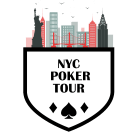The Upswing Poker Lab is a poker training course taught by Doug Polk, Ryan Fee, and other top poker pros. The Lab is updated regularly with in-depth learning modules, theory videos, and a wealth of information to make you a better poker player.
“You can practice shooting eight hours a day, but if your technique is wrong, then all you become is very good at shooting the wrong way. Get the fundamentals down and the level of everything you do will rise.”
In case you are wondering, that was Michael Jordan.
Jordan was famous for his consistency, perseverance, and grit throughout his entire career. Not only did he spend an enormous amount of his free time working on his craft, but perhaps more importantly, he invested the majority of that time working on the basics (work-outs, free throws, etc.). It is very hard to argue with someone like that about the power of fundamentals.
Poker Fundamentals
This brings us to (winning) poker. Very much like any other learned skill, poker has its own set of fundamentals that we need to constantly prioritize over other fancier and more refined techniques. If we want to be successful, perhaps we need to think like MJ and make sure we are done shooting “free throws” for the day before moving on to more elaborate tasks.
Upswing coach Ryan Fee has a nice metaphor to describe this idea. He visualizes poker as a tree that bears each opportunity (for profitability) as a fruit. Of course, not all fruits are equally accessible and valuable.
At the bottom of the tree we have the “low-hanging fruit,” namely fundamental concepts that are easy to learn and very important to understand. These are things like pot odds, preflop hand selection, continuation-bet strategies, etc.
Next, there are the “mid-hanging fruit,” i.e. concepts that are tougher to grasp and less consequential than the low-hanging fruit. Things like blockers and basic balancing strategies fall under this category.
Finally, there are those isolated and often thorn protected “high-hanging fruit” which are not only hard to reach, but may also hurt us in the process of trying to get them. These are the most elaborate and subtle game theory concepts (bluff-to-value ratios, minimum defense frequency, optimal balancing, etc). If used properly, these strategies will give us a relatively small win-rate boost, but, if used improperly, they will be very costly.
Don’t Be Penny Wise and Pound Foolish
If we neglect low-hanging fruit in favor of higher-hanging fruit, we run the risk of potentially “winning the battle but losing the war.”
Think of the drummer of your favorite band. Say they have been working on this crazy difficult drum-solo at the end of the song. All that while neglecting the “boring” early parts. As a result, during the concert, the beginning of the song feels off because the rhythm section is not doing its job. Guess what happens when it is finally time for the crazy solo at the end? Nobody cares because the song is ruined.
The same is true in poker. Say Bob has been obsessing with advanced poker concepts. Then the next hand comes up in his local $5-$10 no-limit full-ring cash game with $1,200 effective stacks:
UTG+2 raises to $40 which is called by the CO, BTN, and SB. Bob decides to call too from the BB with 8Spade Suit 5Spade Suit and we get to the flop:
FLOP ($200) 7Spade Suit 6Spade Suit 2Heart Suit
SB checks, and Bob, who’s been working on a balanced donk-betting strategy, decides to lead out $130 on this flop, as he also leads out with some sets and two pair hands. Only Charlie in the CO calls. (Initial raiser folds.)
TURN ($460) ASpade Suit
Bob sees the good news, but then quickly realizes that the ace likely did not help Charlie’s range as he cannot have many aces that call on that flop (other than perhaps A-7). The fact that the ace is also a spade is relevant as it removes a ton of flush combos from CO’s range. This blocking effect shifts the speculative part of Charlie’s range towards straight draws. On top of that, Charlie did not raise on the flop so he must be capped. All in all, Bob thinks he crushes his opponent’s range which is full of lesser pairs and weak draws and very rarely a monster.
With that in mind, Bob bets only $150, partly to induce and partly for range manipulation. Charlie calls.
RIVER ($760) JClub Suit
The river is pretty much irrelevant, other than the fact that all the straight draws missed (Charlie may occasionally show up with J-J, but that’s about it). Also, Bob blocks some of the straight draws. Besides, Charlie seems to have more weak pairs (like 8-8 through 10-10 or 7x) than busted draws. Bob thinks that such a range is much more likely to either call a small bet or to turn a pair into a bluff-shove representing the flush.
For these reasons he decides to bet tiny: $200, to induce. Sure enough, Charlie shoves all-in for $880 and now Bob happily calls as he thinks he is near the top of his own range. Charlie shows KSpade Suit 10Spade Suit and scoops the pot. “Oh well,” Bob thinks. “Bad luck!” Besides, he did bump into the top of Charlie’s range. That is all true, and Bob’s post-flop analysis – although nowhere near perfect – was on the thoughtful end.
That being said, if Bob wants to be involved out-of-position (OOP) with hands such as 8Spade Suit 5Spade Suit, he should be ready to play near perfectly post-flop and also even consider folding some of his flushes when the situation dictates it. The problem is that hands like these are marginally profitable even for strong players, meaning that they can easily turn unprofitable even when the slightest error occurs.
Bob is walking on a tightrope here, but he doesn’t have to be. He should rethink his study habits and disregard complex concepts are relatively inconsequential – at least for now. After he nails down his fundamentals, he can always move on to working on thinner spots like defending with a mediocre hand OOP against a 4x raise.





